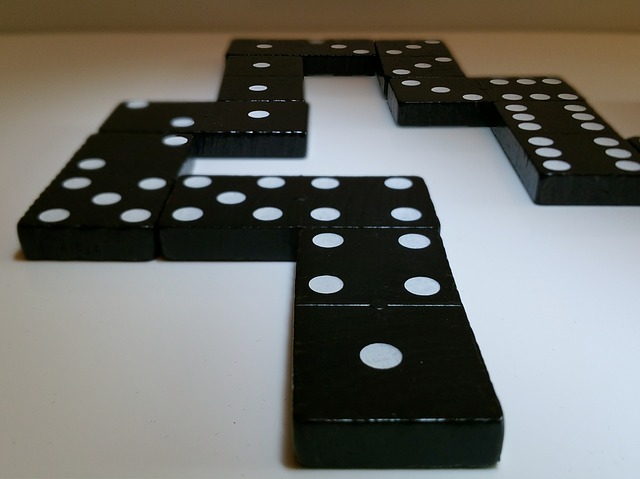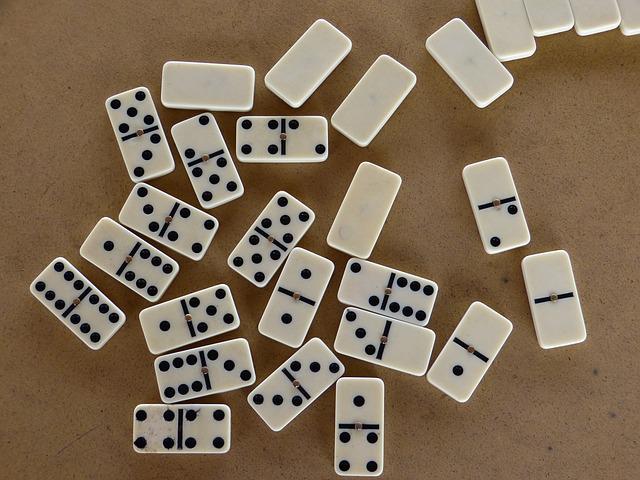They say the world is not so black and white. However, wooden or plastic dominoes are either white dots on a black background or black dots on a white background. Each rectangular cube is divided into two parts by a line in the middle, where there are always dots ranging in number from 0 to 6. All possible combinations exist. The number of dots is the same as the number of domino cubes. The combinations of the number of points in the cube for illustration are 0-0, 0-1, 0-2, 0-3, 0-4, 0-5, 0-6, 1-2, 1-3, 1-4, 1-5, 1-6, 2-3, 2-4, 2-5, 2-6, 3-4, 3-5, 3-6, 4-5, 4-6, 5-6, 1-1, 2-2, 3-3, 4-4, 5-5, 6 -6.

There are several ways to play dominoes, but this is the basic classic: Two or more players place the dice face down on the board. From this pile, each player selects 5 to 7 dice (depending on the number of players) and arranges them neatly in front of him or her. The first die is then drawn from the pile and placed dot up in the center of the board. Players use rock-paper-scissors or other budgeting tools to determine their turn. Then, one die is added to each end of the dominoes so that they have the same number of dots. Players who do not have that number of dice draw a die from the backup pile.

This is done until the same number of dice can be added to both ends of the dominoes. Then the next player continues. When there are no more dice in the backup pile, the player removes one die from the dominoes. Then he/she removes another die from the dominoes until there are a reasonable number of dice to add to the dominoes. The player with no more than one die wins. The next rank is determined by the number of dice left by the player; the second player is the player with the lowest total. For young children, it is preferable to play picture matching dominoes, since pictures are easier to remember.